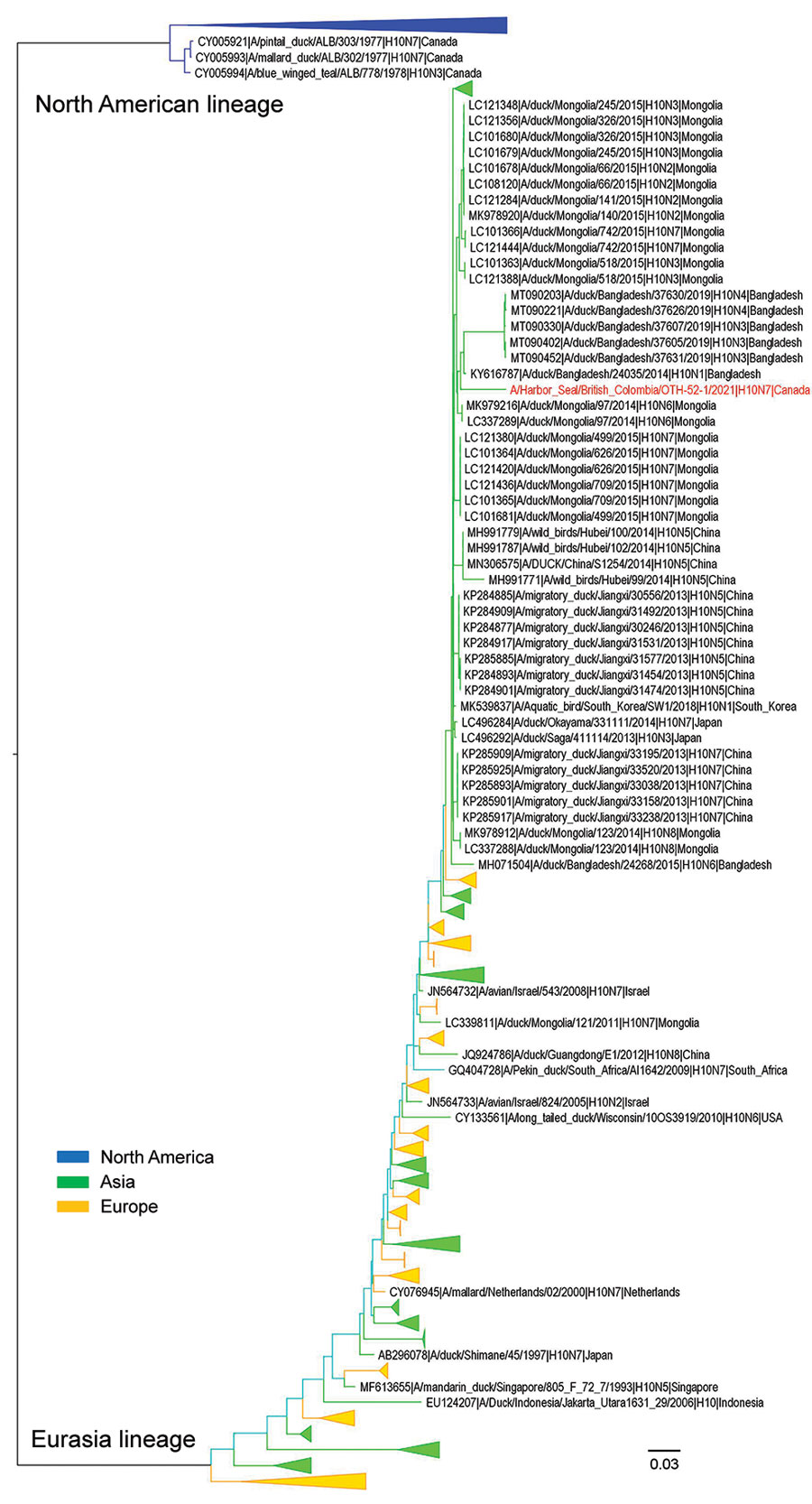Isolation and Characterization of Novel Reassortant Influenza A(H10N7) Virus in a Harbor Seal, British Columbia, Canada
Yohannes Berhane, Tomy Joseph, Oliver Lung, Carissa Embury-Hyatt, Wanhong Xu, Paul Cottrell, and Stephen Raverty

Author affiliations: University of Manitoba Department of Animal Science, Winnipeg, Manitoba, Canada (Y. Berhane); Canadian Food Inspection Agency, Winnipeg (Y. Berhane, O. Lung, C. Embury-Hyatt, W. Xu); Western College of Veterinary Medicine, Saskatoon, Saskatchewan, Canada (Y. Berhane, S. Raverty); Ministry of Agriculture, Food and Fisheries, Abbotsford, British Columbia, Canada (T. Joseph, S. Raverty); University of Manitoba Department of Biological Sciences, Winnipeg (O. Lung); Fisheries and Aquaculture Management, Vancouver, British Columbia, Canada (P. Cottrell); University of British Columbia Institute for Oceans and Fisheries, Vancouver (S. Raverty)
Main Article
Figure 2

Figure 2. Maximum-likelihood phylogenetic tree of influenza A virus subtype H10 hemagglutinin gene from an adult male harbor seal, British Columbia, Canada (red text), and reference sequences. Phylogenetic analyses were based on the full-length nucleotide sequence of the hemagglutinin gene of strains representing the H10 subtype (n = 1,512). The evolutionary relationship was inferred using RAxML (https://github.com/stamatak/standard-RAxML) based on the general time-reversible model with 1,000 bootstrap replicates. For purposes of clarity, some clades are collapsed, and colors are assigned to indicate the origin of the gene: blue for North America, green for Asia, and yellow for Europe. The tree was drawn to scale; branch lengths are measured in number of substitutions per site.
Main Article
Page created: April 18, 2022
Page updated: June 18, 2022
Page reviewed: June 18, 2022
The conclusions, findings, and opinions expressed by authors contributing to this journal do not necessarily reflect the official position of the U.S. Department of Health and Human Services, the Public Health Service, the Centers for Disease Control and Prevention, or the authors' affiliated institutions. Use of trade names is for identification only and does not imply endorsement by any of the groups named above.
